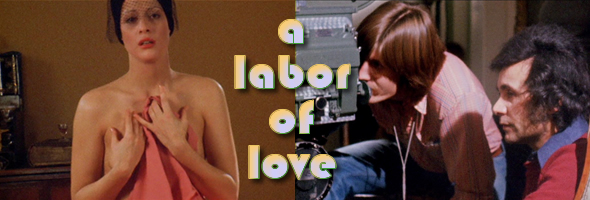
It's worth pointing out that, despite the Xs all over the front cover and the original poster art, this isn't even close to a porn film. There's some matter-of-fact nudity during a few scenes, but the atmosphere is about as far from erotic as you can get. One participant compares it to making an industrial film, which isn't far off the mark. Instead the shooting of the sex scenes provokes an odd variety of emotions in the viewer, with the actors' interviews coloring the proceedings leading up to their big moment. For example, the leading actor and actress The ultimate outcome for The Last Affair is a twist ending all unto itself that won't be spoiled here, but it can be said that the film (which has long since disappeared, apparently) only played in Chicago in the former Playboy movie theater rented out by the producers. (Roger Ebert was one of the few people who saw the end result, but don't read his review until after you've seen this film.) The cast included a couple of future recognizable faces like director/Hill Street Blues actress Betty Thomas and improv pioneer Del Close, but don't expect to see much of them here. Instead the focus is on the greener actors who didn't go on to do much else, and their candor makes for gripping viewing decades before reality TV turned this format into a calculated sham. Of course, this also precedes some more famous fictional looks at the making of adult films, most notably The First Nudie Musical and Zack and Miri Make a Porno; as this film proves, you can't beat real life for sheer unpredictability and entertainment Very difficult to see since its original release, A Labor of Love was rediscovered in Chicago and brought on the specialty revival circuit including a warm reception at the Cinefamily in Los Angeles. Flaxman's post-screening interview with Hadrian Belove is the biggest extra on the 2013 DVD release from Vinegar Syndrome, and it's almost as wild as the movie itself; he covers everything from the start of the project through the ups and downs of filming, with not a word scripted or planned in advance. It was very different from most documentaries in that the speedy start of production didn't allow them to get to know their subjects in advance; instead they simply let the cast and crew dictate the path of the narrative wherever it might go. His comments about Henri are especially fascinating, including a rumored statement he made after the film's release. The theatrical trailer is also included. As for the transfer itself, the film looks terrific with vibrant, very '70s colors including lots of loud wallpaper and carpet patterns (and plenty of flesh tones, obviously). The elements have been kept in fine condition, and the anamorphic framing looks accurate throughout. The mono soundtrack is obviously limited given the rough nature of the original recording (including the noise of the main feature's cameras, which even inspired the unusual opening shot) but the interview footage all sounds sharp and clear. A terrific release and a real discovery if you want to see a very different, gripping look at how an indie film's creation can be far more dramatic than the scripted story.
Directed by Robert Flaxman and Daniel Goldman
Vinegar Syndrome (DVD) (US R0 NTSC) / WS (1.85:1) (16:9)
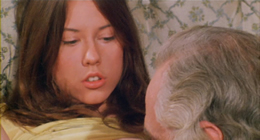 An astonishing documentary almost lost in obscurity, A Labor of Love
An astonishing documentary almost lost in obscurity, A Labor of Love 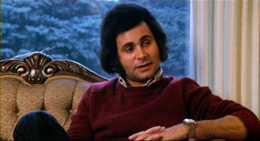 charts a pivotal period in the production of an independent Chicago art film called The Last Affair. The film was initially pitched as a cross between Fellini and Truffaut "with a little Bergman," but due to the popularity of porno chic in theaters from coast to coast at the time, the powers that be dictated that explicit sex scenes had to be included. Neither director Henri Charbakshi nor his cast had any experience shooting hardcore, but they pressed ahead anyway. Meanwhile documentarians Robert Flaxman (a former H.G. Lewis crew member) and Daniel Goldman got wind of the situation and decided to capture the production on film. The final result is incredible, by turns hilarious, uncomfortable, startling, and wistful.
charts a pivotal period in the production of an independent Chicago art film called The Last Affair. The film was initially pitched as a cross between Fellini and Truffaut "with a little Bergman," but due to the popularity of porno chic in theaters from coast to coast at the time, the powers that be dictated that explicit sex scenes had to be included. Neither director Henri Charbakshi nor his cast had any experience shooting hardcore, but they pressed ahead anyway. Meanwhile documentarians Robert Flaxman (a former H.G. Lewis crew member) and Daniel Goldman got wind of the situation and decided to capture the production on film. The final result is incredible, by turns hilarious, uncomfortable, startling, and wistful.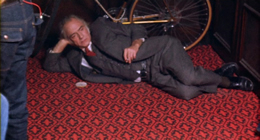 have very different accounts of their "get to know you" dinner the night before, which leads to an incredibly protracted bout of erectile difficulties with a wild turn of events at the end. There's also the unforgettable "daddy" sequence, which involves ad libbing and assumed emotional involvement that makes it weirder than anything a fictional film would have attempted. The real fascination here is watching Henri, who allowed the filmmakers to have a mic on him through the whole process and whose direction includes some highly dubious judgment calls (including having a very noisy camera running during the sex scenes).
have very different accounts of their "get to know you" dinner the night before, which leads to an incredibly protracted bout of erectile difficulties with a wild turn of events at the end. There's also the unforgettable "daddy" sequence, which involves ad libbing and assumed emotional involvement that makes it weirder than anything a fictional film would have attempted. The real fascination here is watching Henri, who allowed the filmmakers to have a mic on him through the whole process and whose direction includes some highly dubious judgment calls (including having a very noisy camera running during the sex scenes). 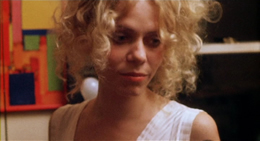
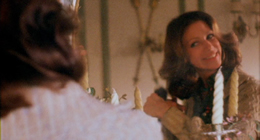 value.
value.
Reviewed on May 26, 2013.
![]()